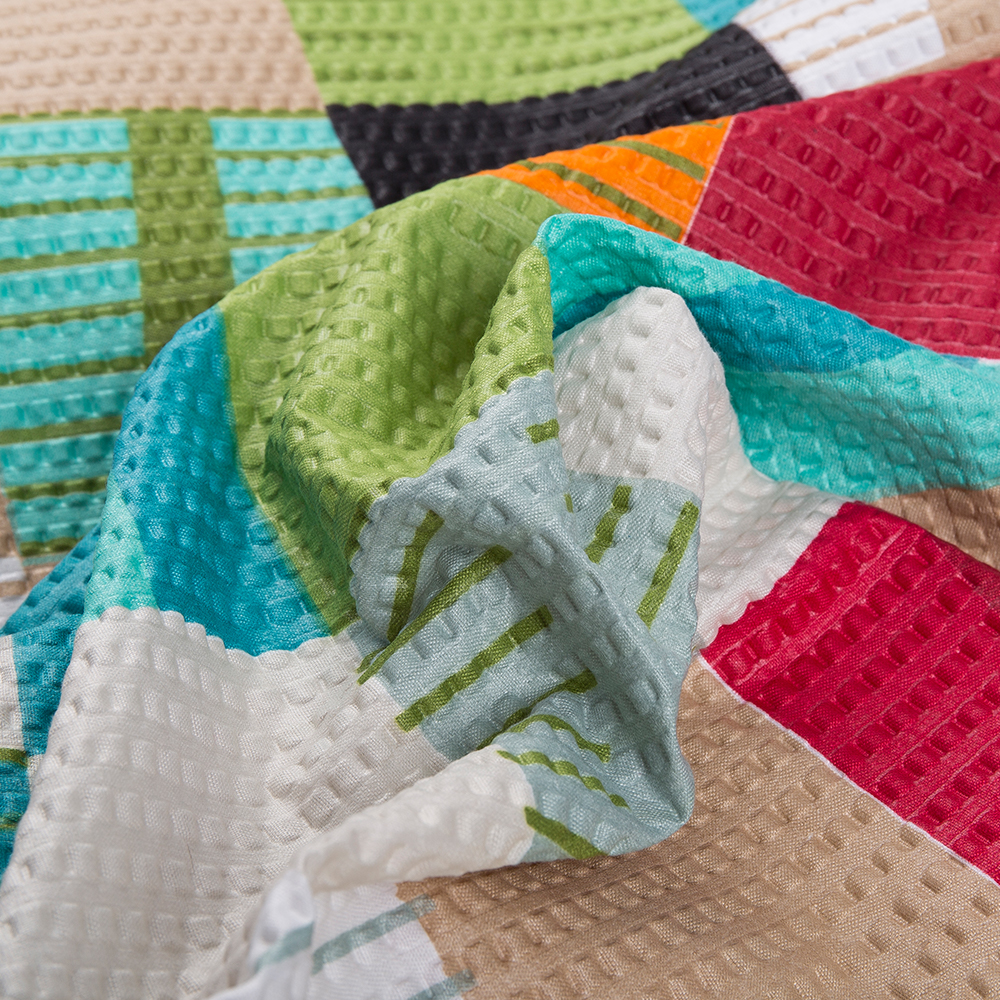
Bubble microfiber fabric is an innovative textile known for its unique texture and excellent absorbency, making it ideal for a variety of applications, from cleaning cloths to bedding. However, as demand for enhanced performance in fabrics grows, many customers are curious if this fabric can be further treated to offer antimicrobial or odor-resistant properties. These added features can significantly increase the fabric's functionality, particularly in environments where hygiene and longevity are top priorities.
The short answer is yes, bubble microfiber fabric can be treated with antimicrobial and odor-resistant properties. Microfiber fabrics, including bubble varieties, are often treated during or after the manufacturing process to improve their ability to combat bacteria and prevent odors. Antimicrobial treatments typically work by using chemical agents that inhibit the growth of microorganisms such as bacteria, mold, and mildew. These treatments can be applied to the fabric surface or integrated into the fibers during production, offering long-lasting protection against harmful microbes. For customers in industries like healthcare, hospitality, or cleaning, antimicrobial microfiber can offer a higher standard of hygiene, reducing the risk of bacterial buildup and improving the longevity of the fabric.
Similarly, odor-resistant treatments for microfiber fabrics work by preventing the absorption and growth of odor-causing bacteria. Fabrics treated with special odor-neutralizing agents can help to maintain a fresh scent, even in high-use environments. This is particularly valuable for fabrics used in towels, gym wear, or bedding—items that are regularly exposed to sweat and moisture. With bubble microfiber fabric’s high absorbency, incorporating odor-resistant treatments can take the fabric’s performance to the next level, making it even more desirable for customers who prioritize freshness and comfort.

However, it is important to note that the effectiveness of antimicrobial and odor-resistant treatments can depend on various factors. For instance, the longevity of these treatments may vary based on washing frequency, the type of detergent used, and whether the fabric is exposed to harsh conditions. Over time, treatments may wear off, but with proper care and periodic reapplication, bubble microfiber fabric can continue to provide excellent protection against microbes and odors.
Another aspect to consider is that not all antimicrobial and odor-resistant treatments are created equal. Some are more environmentally friendly than others, and it's essential to evaluate the chemical agents used in the treatment process. For customers seeking eco-friendly options, there are antimicrobial treatments that rely on natural substances like silver ions, which are both effective and sustainable. Understanding the balance between performance and environmental impact can help make a more informed decision about fabric treatment options.
In conclusion, bubble microfiber fabric can indeed be enhanced with antimicrobial and odor-resistant properties, expanding its versatility and appeal. Whether for high-use household items, industrial applications, or specialized textiles like medical scrubs, these treatments provide an extra layer of protection and comfort. When selecting bubble microfiber fabric, customers can choose from various treatment options based on their specific needs, ensuring the fabric meets both practical and environmental expectations.